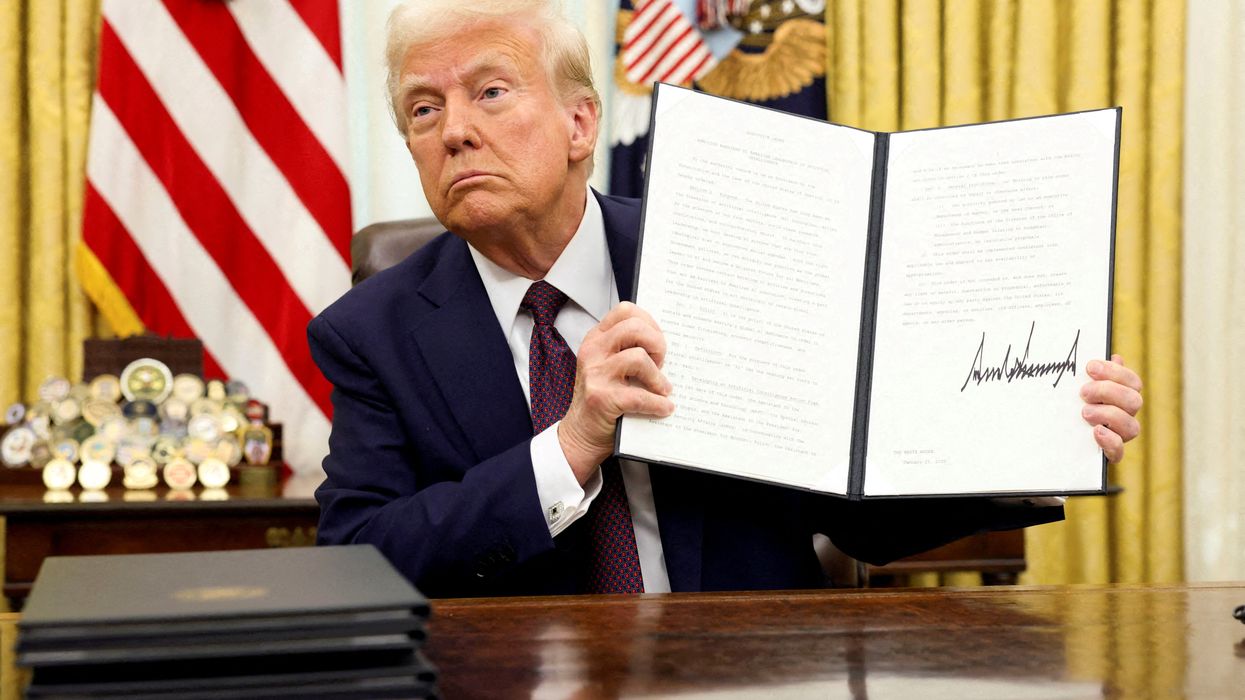'Guardrails are gone': Historians reveal 'pattern' Trump is following as he becomes 'more out of touch'

On Monday, the New York Times’ Peter Baker outlined how President Donald Trump has taken a “different, even more aggressive approach" at the onset of his second term in power.
As Baker reports, Trump's focus on migrants and international trade is largely the same as his first administration. But one of the most glaring changes is linked to his hiring of billionaire Elon Musk, who is making major cuts to the federal government via the Department of Government Efficiency (DOGE). By contrast, Trump was spending freely during his last administration. And, where Trump previously wanted to get out of the Middle East, he has now announced that he hopes to take over Gaza. Baker writes that “America First isolationism” [is giving] way to a form of America First imperialism.”
“In these particular ways, Trump 1.0 and Trump 2.0 look very different,” Julian E. Zelizer, a Princeton historian who edited a book on Trump’s first term, told the Times. “If we look back at the first term, there’s room for some of this — he was against government but he didn’t do much about it; he was against nation-building but he wasn’t entirely isolationist. It’s very Trumpian. There’s room for lots of stuff, but it’s where the emphasis is.”
READ MORE: 'Are they going to come after me now?' Trump's purges revive an old question
Trump has flip flopped throughout his career. He has changed parties and changed his views on abortion, gun control, taxes and the invasion of Iraq. Baker argues that the consistent through line for Trump’s ideology is “a conviction that the United States was being cheated by friends and enemies alike.”
Some point out that it’s not Trump that’s different — it’s who is with him. “Trump clearly has not changed,” Jeremy Shapiro, a former State Department official in the Obama administration, told the Times. “What has changed is his administration — that is, the people around him. The guardrails are gone and the adults have left the room. We are now seeing a much purer version of Trump, less filtered by traditional advisers and the institutions of U.S. governance.”
This change might not be completely unexpected, though. “This actually fits a historical pattern,” Jeremi Suri, a presidential historian at the University of Texas at Austin, told the Times. “Over time, presidents rely on a closer and more limited circle. They become isolated and often more out of touch.”
We are in unprecedented times as the Trump administration looks to dismantle the agency overseeing foreign aid, and the Department of Education. He has threatened to displace Palestinians in Gaza by taking it over, claim the Panama Canal, buy Greenland, make Canada the “51st state,” and rename the Gulf of Mexico to the Gulf of America. Some ideas are ones he floated during his last presidency, but ultimately decided to drop — like overturning birthright citizenship. Now, he is emboldened to sign an executive order barring the right for those born on U.S. soil to become citizens.
READ MORE: Trump is already out gaming America's last line of defense
Trump’s new actions, Baker writes, are approaching “an ideology driven by the pure flexing of power.”

